How does the electric field inside a charged capacitor force the electrons in a conductor to flow and establish electricity?
-
Related, but not a duplicate: [How does a capacitor block DC?](https://electronics.stackexchange.com/questions/18301/how-does-a-capacitor-block-dc) – Dec 25 '17 at 18:24
-
Forget the electric field inside a charged capacitor, when asking about what "forces" electrons to flow. Just realize that conduction band electrons in a conductor (like those in a wire leading up to the capacitor) repel each other and spread out as far away from each other as they possibly can. Also realize that there are about \$8.5\times 10^{22}\frac{e^-}{\textrm{cc}}\$ at room temp. That's 13600 Coulombs per cc!!! It doesn't take much to cause a few milliCoulombs to just slightly shift position. – jonk Dec 25 '17 at 19:19
-
Strip two long pieces of adhesive tape and experiment with forces to avoid contact when the discharge current neutralizes the force and charge difference. – Tony Stewart EE75 Dec 25 '17 at 20:08
-
1"Electricity" is not a quantity or a thing. *"established Electricity"* is therefore nonsensical babble. – Olin Lathrop Dec 25 '17 at 21:11
-
It does not....electric field in the wire does. – sarthak Dec 27 '17 at 10:27
2 Answers
What is an electron? a negative charge that is part of an atomic valence band and in conductors freely cascades in conductive material
What is a conductor? a material that permits easy flow of electrons but cannot store energy but acts as a conduit of charge that may flow while forces are at right angles for E field (voltage) and H field (current)
What is an insulator? it is also dielectric that stores charges and energy if an E field is applied and thus resists charge flow unless the external voltage or internal capacitance changes. ( all insulation has relative capacitance, where a vacuum = 1 by definition)
What is current? the rate of flow of charges.
Ic=dQ/dt = CdV/dt C=dQ/dV
Assuming you understand some of the above, now your question.
How electric field ... forces the electrons in conductor to flow?
By definition electrons flow easy in conductors low R and not easily in insulators, high R. The voltage and resulting attraction force between 2 electrodes of different voltage levels is applying a force to leak current across the insulation. This leakage current is tiny compared to the current due to the normal change in voltage due to applied current and visa versa.
In order to apply or remove voltage from a capacitor it takes or gives energy, as in a battery, which is a special case of high density capacitor with a chemical cell potential.
Analogy
Let's say we are at the Comedy Club and those laugh easily , let us call "conductors" and those with absolutely no sense of humor or for some reason cannot laugh are called "insulators" Can you image how much it takes ("force") from the Comedian to make the insulators laugh. He must either change the voltage ( content or presentation) or maybe you need to be in a better mood or change your expectations, C to laugh easier (change V) and thus current is conducted thru the insulation to transfer the charges.
--
The leakage of current from shunt resistance ,Rsh and charge Capacitance, C is good for energy storage with a wide range of storage times T=RC.
The same charges spread out and create a force and opposing charges on 2 plates with the insulator between create a high E field force but due to the insulation properties, if the force is constant OR the voltage is constant OR the capacitance is constant , then the insulation properties resist the flow of current.
The charge density of the insulation is measured by the dielectric constant and is greatest in chemicals with very low or high ph value about a neutral 7. ( i.e. acid or base) But is also high in solids (tantalum, Lithium) and lower but abundant in high grade pure plastic, PE, PU, PTFE etc. which ultimately comes from mineral oil.
For Basic Physics on Charge forces
ref http://physics.tutorvista.com/electricity-and-magnetism/electric-field.html
The energy stored (E=1/2CV^2) and that takes work and demands that current must flow to
- An analogy to the C of two plates close together is a canoe paddle in water. The faster the paddle is moved or the bigger the paddle, the more force must be applied and if conducted then current will be stored or discharged depending on direction. ( you can accelerate or brake with a paddle) But otherwise a stationary paddle has no force to still water.
- 1
- 3
- 54
- 182

simulate this circuit – Schematic created using CircuitLab
Imagine that we have a short-circuited capacitor that was somehow charged to a hold a certain charge before shorting its terminals. The crucial point here is that the electric field which is generated between the capacitor plates (which the op knows about) creates a potential difference between the metal plates attached to terminals A and B. This means that if the plate A is positively charged the electrons near plate B will be at a higher potential then the electrons at plate A (Since electrons are negatively charged and the direction of the electric field is from A to B). Since systems proceed in a manner to minimise their potential energy, the electrons near B will flow towards terminal A. This will continue to happen until the net charge on both the capacitor plate becomes zero. If this answer is unclear to the op, this link might be helpful: How do capacitors work reference